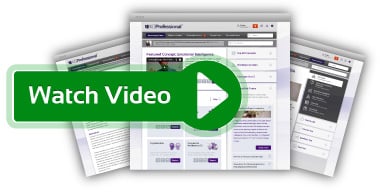Neuroscience
Neuroscience offers a deep understanding of the way we think and act. Case studies present the solutions adopted by companies to implement these new findings in their organisation, improving performances and results.
Technique Overview

Neuroscience Definition
Neuroscience is the study of how the nervous systems develops, its structure and what it does. The most fundamental property of the brain is connectivity. Canadian psychologist Hebb (Hebb, 1949): “Neurons that fire together, wire together” (Löwel 1992), that associated activity creates inter-connection amongst single and groups of neurons. The aim of neuroscience is to understand underlying mechanisms of the neurons, their interaction and the overall architecture of the brain, but also the functional processes of the brain, stretching the areas of inquiry to human cognition and mind.
Neuroscience Description *
* The full technique overview will be available soon. Contact us to register your interest in our business management platform, and learn all about Neuroscience.
Business Evidence
Strengths, weaknesses and examples of Neuroscience *
* The business evidence section is for premium members only. Please contact us about accessing the Business Evidence.
Business Application
Implementation, success factors and measures of Neuroscience *
* The business application section is for premium members only. Please contact us about accessing the Business application.
Professional Tools
Neuroscience videos and downloads *
* The professional tools section is for premium members only. Please contact us about accessing the professional tools.
Further Reading
Neuroscience web and print resources *
Neuroscience references (4 of up to 20) *
- Baars, B.J., Gage, N.M. (2010) Cognition, Brain, and Consciousness: Introduction to Cognitive Neuroscience. Oxford: Elsevier
- Butler, M. J.R., O'Broin, H. L.R., Lee, N. and Senior, C. (2016), How Organizational Cognitive Neuroscience Can Deepen Understanding of Managerial Decision-making: A Review of the Recent Literature and Future Directions. International Journal of Management Reviews, 18: 542–559
- Changeaux, J.P. (2004) The physiology of truth. Cambridge MA: Harvard University Press
- Churchland, P. (2013) Touching A Nerve: The Self as Brain. London: W. W. Norton & Company.
* The further reading section is for premium members only. Please contact us about accessing the further reading.
Learn more about KnowledgeBrief Manage and how you can equip yourself with the knowledge to succeed on Neuroscience and hundreds of other essential business management techniques

